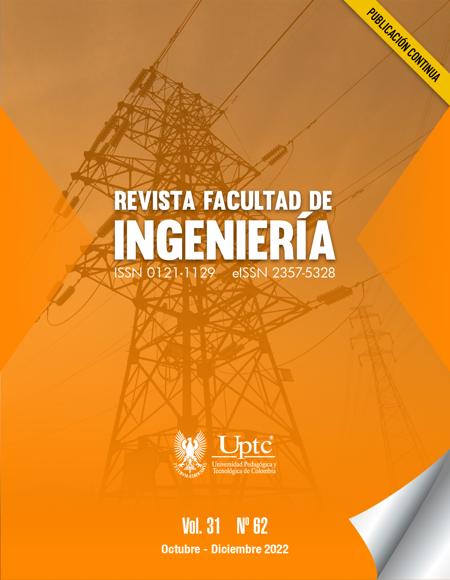Agile Functional Requirements Modeling from Goal-Oriented Requirements Engineering: A Systematic Mapping Study

Abstract
During the last two decades, the application of Goal-Oriented Requirements Engineering has increased in software projects, mainly because this approach is useful during the requirements analysis process and supports the realization of tasks such as requirements elaboration, validation, and planning, and can be used as part of the system life cycle, e.g. architecture and design of behavioral processes, coding, testing, monitoring, adaptation and evolution. Several approaches addressing goal-oriented requirements have already been proposed. Currently, there are several concerns about how to correctly adopt and implement it in current industrial contexts, such as agile approaches and, more specifically, its integration with user stories and acceptance criteria. This study presents a compilation of the current knowledge on adopting GORE in agile requirements specification through user stories and their acceptance criteria. A systematic mapping study guided by ten research questions was conducted, and nine primary studies were selected considering the selection criteria. The results obtained show some initiatives as goal-oriented modelling languages in different proposals for transforming goal-oriented models into user stories, among them: i* (i-star), Tropos, KAOS, GRL, AOM, and Goal Net. This study provides a solid basis for classifying existing and future approaches in the application of GORE. Researchers and practitioners can use this mapping to identify existing technical/research gaps to better address and assess their own contributions or understand existing ones.
Keywords
GORE, i*, agile, requirements, software engineering
References
- R. S. Pressman, Ingeniería del Software: Un Enfoque Práctico. New York: Mc Graw Hill, 2005.
- G. Johnson, “Chaos: The dollar drain of IT project failures,” Application Development Trends, vol. 1, pp. 41–47, 1995.
- S. Maalem, N. Zarour, “Challenge of validation in requirements engineering,” Journal of Innovation in Digital Ecosystems, vol. 3, pp. 15–21, 2016. https://doi.org/10.1016/j.jides.2016.05.001 DOI: https://doi.org/10.1016/j.jides.2016.05.001
- F. P. Brooks, The mythical man-month , The: Essays on Software Engineering. New York: Addison-Wesley Professional, 1995.
- D. Pandey, B. Bhimrao, V. Pandey, “Importance of Requirement Management: A Requirement Engineering Concern,” International Journal on Research and Development, vol. 1, pp. 2319–5479, 2012.
- N. A. A. Rahman, R. Hassan, Z. Zakaria, S. Kasim, “NIMSAD framework to evaluate the role-based goal modelling,” International Journal on Advanced Science Engineering Information Technology, vol. 7, no. 5, pp. 1728–1734, 2017. https://doi.org/10.18517/ijaseit.7.5.3402 DOI: https://doi.org/10.18517/ijaseit.7.5.3402
- V. M. B. Werneck, A. De Padua Albuquerque Oliveira, J. C. S. Do Prado Leite, “Comparing GORE frameworks: I-star and KAOS”, in Proceedings of the 12th Workshop on Requirements Engineering - WER, pp. 15–26, 2009.
- R. S. Watzlawick, Object-Oriented Analysis and Design for Information Systems Modeling with UML, OCL, and IFML.New York: Morgan Kaufmann, 2014.
- M. Reyes, “Modelado empresarial, metodología para el rediseño organizacional y la automatización, Caso de estudio: Zona Libre Cultural, Científica y Tecnológica del estado Mérida, ZOLCCYT,” Revista Visión General, vol. 6, pp. 91–104, 2007.
- L. A. Lezcano-Rodríguez, J. A. Guzmán- Luna, “Ontological characterization of basics of kaos chart from natural language,” ITECKNE, vol. 13, p. 157, 2016. https://doi.org/10.15332/iteckne.v13i2.1482 DOI: https://doi.org/10.15332/iteckne.v13i2.1482
- F. Dalpiaz, X. Franch, J. Horkoff, “iStar 2.0 Language Guide,” arXiv preprint, vol. 3, pp. 3-15, 2016. https://doi.org/10.48550/arXiv.1605.07767
- K. Petersen, S. Vakkalanka, L. Kuzniarz, “Guidelines for conducting systematic mapping studies in software engineering: An update,” Information and Software Technology, vol. 64, pp. 1–18, 2015. https://doi.org/10.1016/j.infsof.2015.03.007 DOI: https://doi.org/10.1016/j.infsof.2015.03.007
- D. L. Burbano, C. J. Pardo, C. E. Orozco, “Systematic Mapping of the Harmonization of SCRUM and ISO 9001,” Revista Facultad de Ingeniería, vol. 30, pp. 1–15, 2021. https://doi.org/10.19053/01211129.v30.n56.2021.13303 DOI: https://doi.org/10.19053/01211129.v30.n56.2021.13303
- J. D. Paton-Romero, M. Piattini, “Green IT maturity models: A systematic mapping study,” in Iberian Conference on Information Systems and Technologies - CISTI, Portugal, pp. 1-6, 2017. https://doi.org/10.23919/cisti.2017.7975693 DOI: https://doi.org/10.23919/CISTI.2017.7975693
- M. Ivarsson, T. Gorschek, T. “A method for evaluating rigor and industrial relevance of technology evaluations,” Empirical Software Engineering, vol. 16, pp. 365-395, 2011. https://doi.org/10.1007/s10664-010-9146-4 DOI: https://doi.org/10.1007/s10664-010-9146-4
- M. Lucena, C. Agra, F. Alencar, E. Aranha, A. Jaqueira, “Integrating User Stories and i* Models - A Systematic Approach,” in Proceedings of the 17th International Conference on Enterprise Information Systems, pp. 428–438, 2015. https://doi.org/10.5220/0005400904280438 DOI: https://doi.org/10.5220/0005400904280438
- K. Boness, A. Finkelstein, R. Harrison, “A method for assessing confidence in requirements analysis,” Journal of Information and Software Technology, vol. 53, no. 10, pp. 1084–1096, 2011. https://doi.org/10.1016/j.infsof.2011.05.003 DOI: https://doi.org/10.1016/j.infsof.2011.05.003
- J. Gamboa, C. León, “Evolution of the Methodologies and Models used in Software Development,” INNOVA Research Journal, vol. 3, no. 10, pp. 20–33, 2018. DOI: https://doi.org/10.33890/innova.v3.n10.2018.651